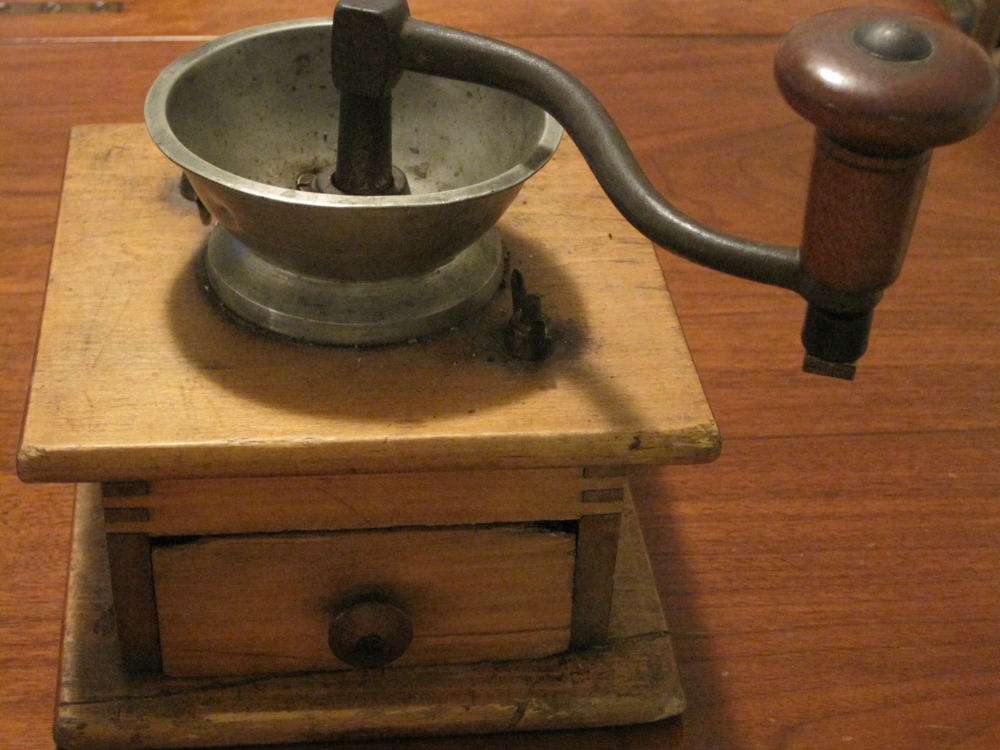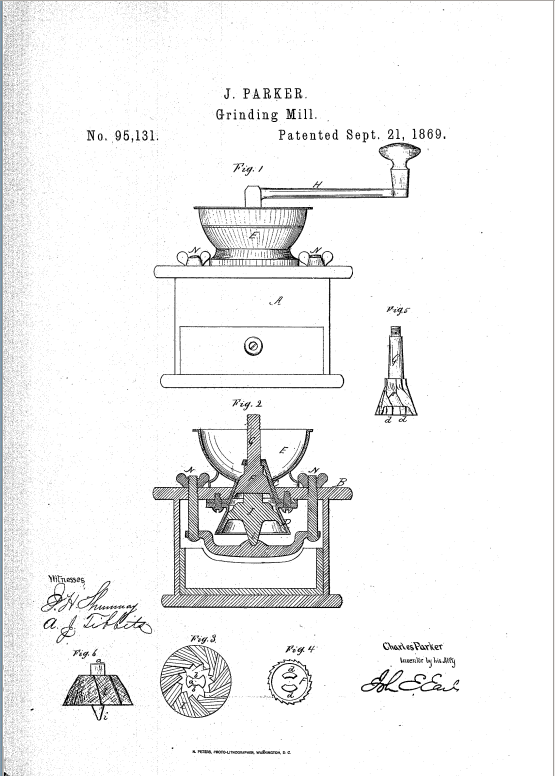Another blog asks readers 'Do you own anything that was manufactured in the 1950s and still is in regular, active use in your life?' The answer for me is 'no', and I spent some time thinking/rummaging to be sure. However, I frequently use an object that was very likely manufactured much earlier than 1950.
When I was younger, I would grind coffee on an old box coffee mill at my grandparent's house. My grandmother 'Mama' Katie Bryan gave the grinder to me a few years ago, and I use it almost daily to grind coffee for myself.
The grinder is a wooden box mill, with a cast iron crank and grinding mechanism. The basket that holds the coffee beans is made of some other metal or alloy. Most of the wood has a light brown finish, except for the knobs on the drawer and crank. The crank knob is sufficiently different that I suspect it is not original. Below the crank knob is a rubber or plastic bushing and a square nut. These are certainly not original. The wooden base of the grinder shows evidence of repair with glue from a fracture just below the drawer. A second fracture in the rear was never repaired, and the wood is lost. There are no markings on the grinder that might identify the manufacturer. Figure 1 is an image of the coffee grinder from the front, showing the crank knob, bushing, and the repaired fracture line.
Figure 1. Mama Katie's Coffee Grinder
I wrote my grandmother to ask if she knew where the grinder originated, and she wrote back:
The grinder belonged to my grandmother Hewgley. My dad was the oldest child, born 1887. It has to go back that far (5 generations).
After this exchange, I spent some time researching antique American coffee mills and found the website of the Association of Coffee Mill Enthusiasts (ACME, Est. 1994). The ACME website has a large number of photographs of coffee mills and links to other sites with more photos. In browsing these pictures, I found that the Charles Parker Company, of Meriden, CT had manufactured some coffee grinders similar to Mama Katie's. Figure 2 displays one such 'Parker's Union' coffee mill, probably manufactured in the mid to late 1800s.
Figure 2. Parker's Union Coffee Mill
The real breakthrough came after looking through some of the U.S. Patent and Trademark Office (USPTO) documents related to coffee mills. In fact, there is a nice website devoted entirely to cataloging coffee mill patents. From this site, I was able to find several patents issued to various members of the Parker family, dated between the years of 1832 and 1880. Figure 3 shows a 1961 Parker patent drawing. Notice the rectangular shape where the crank shaft is terminated. This is a common and unique feature (in my research) among Parker mills.
Figure 3. E. Parker Patent Drawing No. 33599
Another Parker patent, number 95131 is the most convincing. Figure 4 displays the patent drawing awarded in 1869. In this drawing we see wingnuts and the mechanism to make grounds more or less fine. Mama Katie's grinder has a similar internal mechanism. However, there are some differences. Mama Katie's grinder doesn't have such a large inverted cone structure inside the box, nor is the drawer specially carved.
Figure 4. J. Parker Patent Drawing No. 95131
Earlier and later Parker patents indicate that the company had adopted the design of Mama Katie's grinder by 1869 and moved on to a more modern design by 1877 (patent no. 187898). Based on these patent documents, it seems reasonable that my great great grandmother's coffee grinder is a design of the Charles Parker Company, manufactured in Meriden, CT in the mid to late 1800s.



